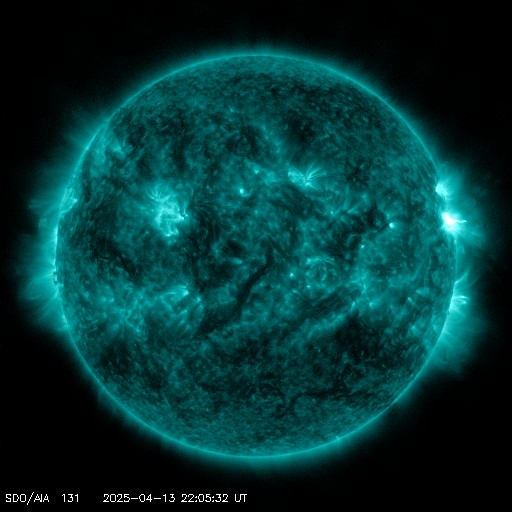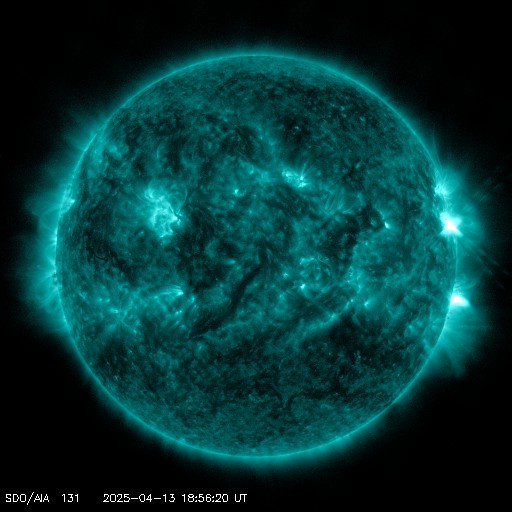Viewing archive of Sunday, 7 February 2016
Daily bulletin on solar and geomagnetic activity from the SIDC
Issued: 2016 Feb 07 1231 UTC
SIDC Forecast
Solar flares
C-class flares expected, (probability >=50%)
Geomagnetism
Quiet (A<20 and K<4)
Solar protons
Quiet
| 10cm flux | Ap | |
|---|---|---|
| 07 Feb 2016 | 120 | 006 |
| 08 Feb 2016 | 125 | 007 |
| 09 Feb 2016 | 125 | 007 |
Bulletin
Solar activity again was very low with four lower C-class flares (C1.7 as maximum), originating from NOAA active regions (AR) 2494 and 2496. NOAA ARs 2495 and 2497 have clearly grown in number of spots, while NOAA 2492 has also shown some development in its leading and intermediate part. NOAA AR 2494 is further decaying especially in its leading area. All other regions remained largely simple. Flaring activity is expected at C-level, with a slight chance for an M-class flare. No new Earth-directed CMEs were observed.
The solar wind conditions were normal with magnitude of interplanetary magnetic field (IMF) maximally 6 nT and solar wind speed between 400 and 450 km/s.
Geomagnetic conditions were quiet (K=1-2) to unsettled (K=3), both at the local (Dourbes) and global level (NOAA estimate), which are expected to continue till the possible arrival of an Earth-directed component of the February 5 CME on February 9.
Today's estimated international sunspot number (ISN): 095, based on 13 stations.Solar indices for 06 Feb 2016
| Wolf number Catania | /// |
| 10cm solar flux | 117 |
| AK Chambon La Forêt | 017 |
| AK Wingst | 008 |
| Estimated Ap | 008 |
| Estimated international sunspot number | 082 - Based on 13 stations |
Noticeable events summary
| Day | Begin | Max | End | Loc | Strength | OP | 10cm | Catania/NOAA | Radio burst types | |
|---|---|---|---|---|---|---|---|---|---|---|
| None | ||||||||||
Provided by the Solar Influences Data analysis Center© - SIDC - Processed by SpaceWeatherLive
All times in UTC
Current data suggests there is a slight possibility for aurora to appear at the following high latitude regions in the near future
Gillam, MB, Iqaluit, NUNuuk
Reykjavik
Latest news
Latest forum messages
Support SpaceWeatherLive.com!
A lot of people come to SpaceWeatherLive to follow the Sun's activity or if there is aurora to be seen, but with more traffic comes higher server costs. Consider a donation if you enjoy SpaceWeatherLive so we can keep the website online!

Latest alerts
Sunday, 13 April 2025
22:21 UTC - Solar flare
Moderate M1.66 flare from sunspot region 4055
22:03 UTC - Radio Blackout
Minor R1 radio blackout in progress (≥M1 - current: M1.01)
20:48 UTC - Hemispheric Power Index
The OVATION model predicts the Hemispheric Power Index to reach 50GW at 21:39 UTC
19:09 UTC - Solar flare
Moderate M3.24 flare from sunspot region 4055
18:51 UTC - Radio Blackout
Minor R1 radio blackout in progress (≥M1 - current: M1.07)
Space weather facts
| Last X-flare | 2025/03/28 | X1.1 |
| Last M-flare | 2025/04/13 | M1.6 |
| Last geomagnetic storm | 2025/04/06 | Kp5 (G1) |
| Spotless days | |
|---|---|
| Last spotless day | 2022/06/08 |
| Monthly mean Sunspot Number | |
|---|---|
| March 2025 | 134.2 -20.4 |
| April 2025 | 136.4 +2.2 |
| Last 30 days | 134.2 -8.9 |




